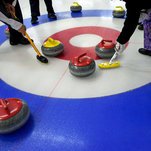ST. PAUL, Feb. 28— This may be the state that prides itself as a champion of good government, but the way its voters will pick who they want for President this year is about as long, enduring and difficult to get through as Minnesota winters.
The confusion starts on Tuesday, when eligible voters go to schools, churches, recreation centers and other meeting places for precinct caucuses, as a small fraction of Minnesotans have for decades. But that is not the end of it. On April 7, the state will stage its first Presidential primary since 1956. And for the first time in at least 50 years, Minnesota voters will have to declare their party affiliation at the polling stations.
Democrats will choose delegates through the caucuses, and for them the primary will be just a popularity contest. For Republicans it is the primary that counts.
Baffled? So are the voters. 'Culture Shock'
"It's going to be the closest thing to political culture shock that they've had in this state in a long time," said D. J. Leary, a veteran Democratic consultant and publisher of a political newsletter.
The Democratic caucuses cannot be dismissed because the 78 Democratic delegates at stake here are more than in Colorado, Georgia, Washington, Maryland, Idaho and Utah, the other states that have contests on Tuesday.
Senator Tom Harkin of Iowa is banking on a victory in the Democratic caucuses to keep his candidacy afloat.
"Our message is Minnesota's message," Mr. Harkin proclaimed during a visit to the State Capitol here on Thursday. Indeed, if ever there was a receptive audience for Mr. Harkin's unapologetic liberalism, it is among the Democratic caucus participants here, who are among the most liberal people in one of the country's most liberal states.
Even more important is that Mr. Harkin's only endorsement from a fellow Senator comes from Paul Wellstone, the freshman Minnesota Democrat who ran a come-from-behind campaign to defeat Senator Rudy Boschwitz in 1990 and has essentially turned over his grass-roots organization to Mr. Harkin. Kerrey Moves In
The only other Democrat aggressively challenging Mr. Harkin is his Midwest neighbor, Senator Bob Kerrey of Nebraska, who is not nearly as well established here.
But Mr. Kerrey has poured organizers into Minnesota in recent weeks in the hope that he can repeat his defeat of Mr. Harkin in their South Dakota showdown last week, or, at the very least, position himself as the alternative to Mr. Harkin should the Iowan pull out of the race before the April 7 primary.
Mr. Kerrey addressed the State Legislature in St. Paul today and appealed for support from students at the nearby Macalester College. "Tom is slightly better organized than I am as a result of strong support from organized labor," he said. "It's not must-win. But I would love to win."
Among the other Democrats, Paul E. Tsongas, the former Senator from Massachusetts, has begun assembling an organization, but Gov. Bill Clinton of Arkansas and former Gov. Edmund G. Brown Jr. of California have written off the Minnesota caucuses.
At Tuesday's caucuses, the Democratic party, which calls itself the Democratic-Farmer-Labor Party here, will take a poll on Presidential preference. That will lead, after a series of interim steps, to the selection of delegates to the national convention. The primary itself will have no bearing on the delegates but could be important for its public-relations value.
The opposite is true for the Independent-Republicans, as Republicans here are called. The caucuses will be used largely for internal party business and there will be no straw poll. It is the primary that will determine how the Republican delegates are apportioned.
Television commercials and the bumper stickers, rarely a staple of caucuses anyway, are nowhere to be seen here where the political debate is as much about the tortuous process as it is over what the candidates stand for.
Acknowledging that "I'd be lying to you if I said I was rolling in dough," Mr. Harkin said he had scaled back the states he is competing in and is desperate for a victory here.
Mr. Wellstone conceded that there have been some defections in Minnesota from people who perceive Mr. Harkin's campaign as practically dead. "We're kind of going against the momentum," Mr. Wellstone said. "But I think we can pull it off."
Rick Stafford, who is overseeing the Democratic caucuses, predicted that many at the caucuses would vote uncommitted because they no longer want to pin their hopes on Mr. Harkin. "People want to be with a winner," he said, "and a lot of people think Harkin will be done after next Tuesday."
Even if Mr. Harkin wins here, it is by no means certain that his campaign would "take off," as he predicted. Caucuses are not considered as representative as primaries -- and thus are not taken as seriously by the national media -- because their outcome is often determined by a small group of active voters who are well organized. Caucuses Are Called Elitist
That was a major reason why Governor Arne Carlson, a Republican, and many Democrats championed the primaries here as a replacement for the caucuses, which are always lightly attended and which Mr. Carlson attacks as elitist.
Indeed, the caucuses were adopted in Minnesota after primary voters did not follow the wishes of state political leaders in the in the 1950's. In 1952, the Republican leaders backed Harold Stassen for the Republican Presidential nomination but tens of thousands of people wrote in their support for Dwight D. Eisenhower, helping propel him to the White House. Four years later, on the Democratic side, party leaders in Minnesota wanted Adlai E. Stevenson to win the nomination, but Minnesota voters favored Estes Kefauver.
Though the state has returned partly to primaries, politicians could not completely do away with the caucuses, which they contend will remain critical for shaping the parties' philosophies and for grooming candidates.







